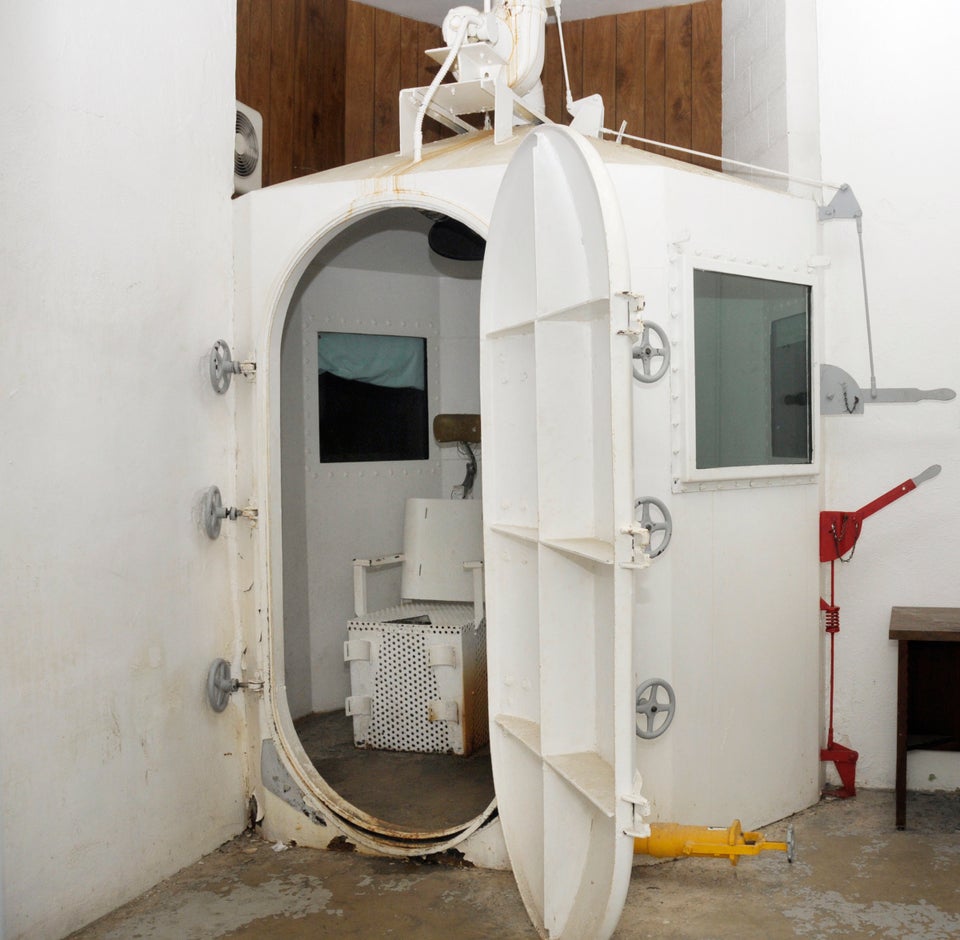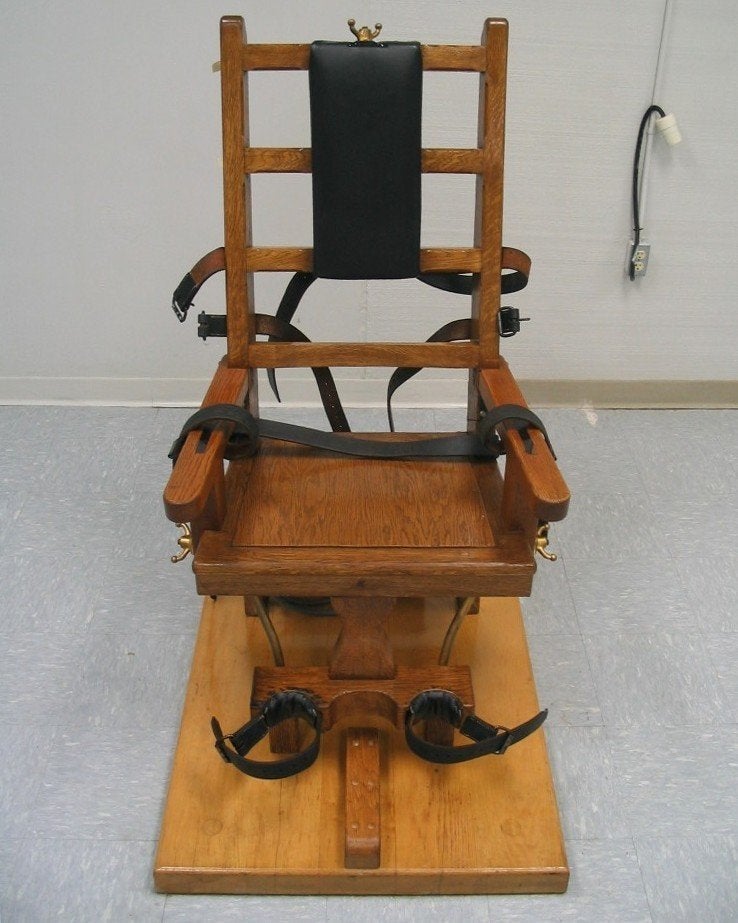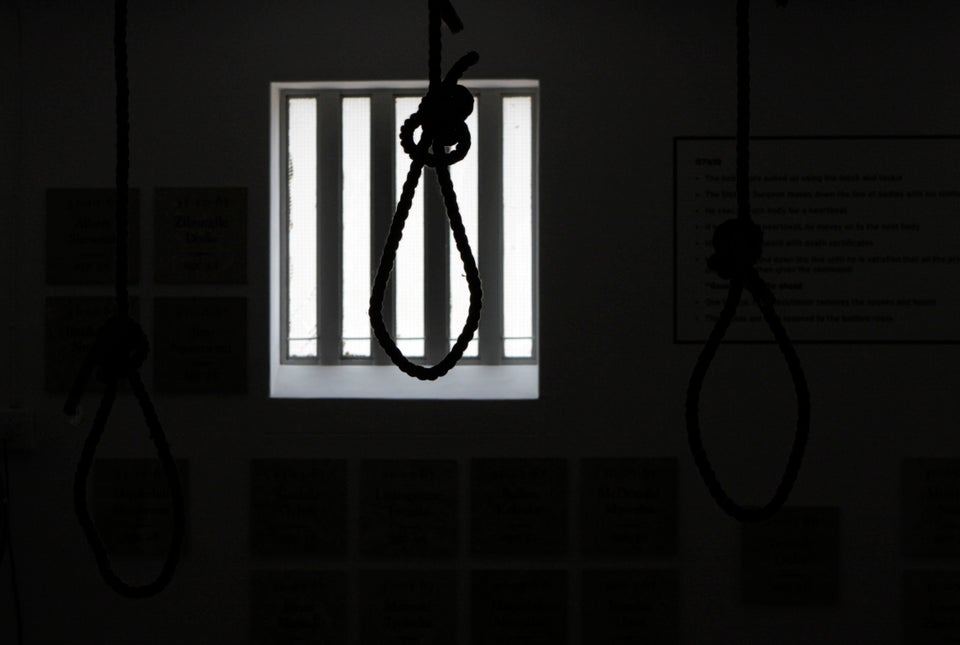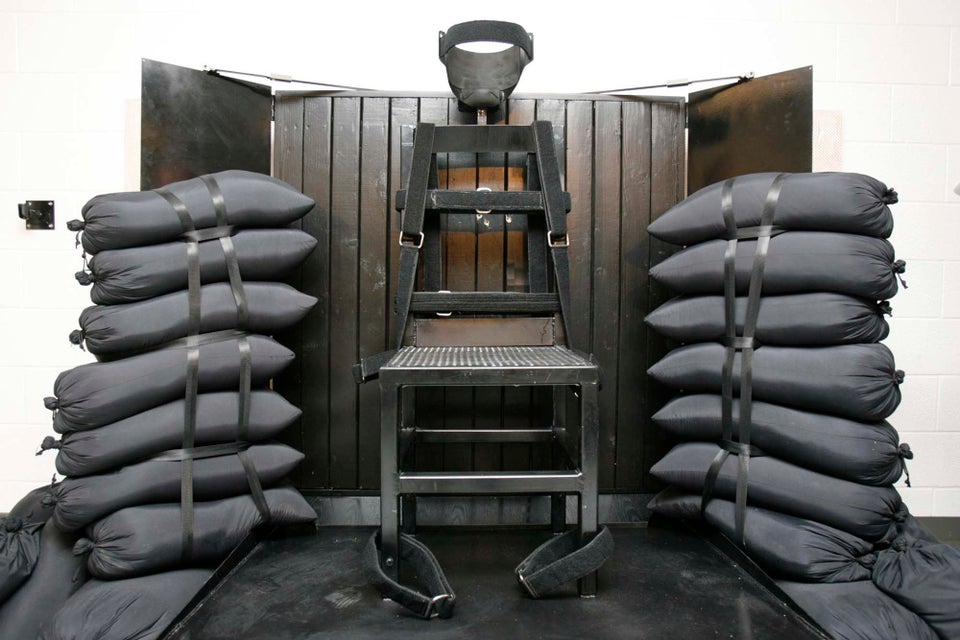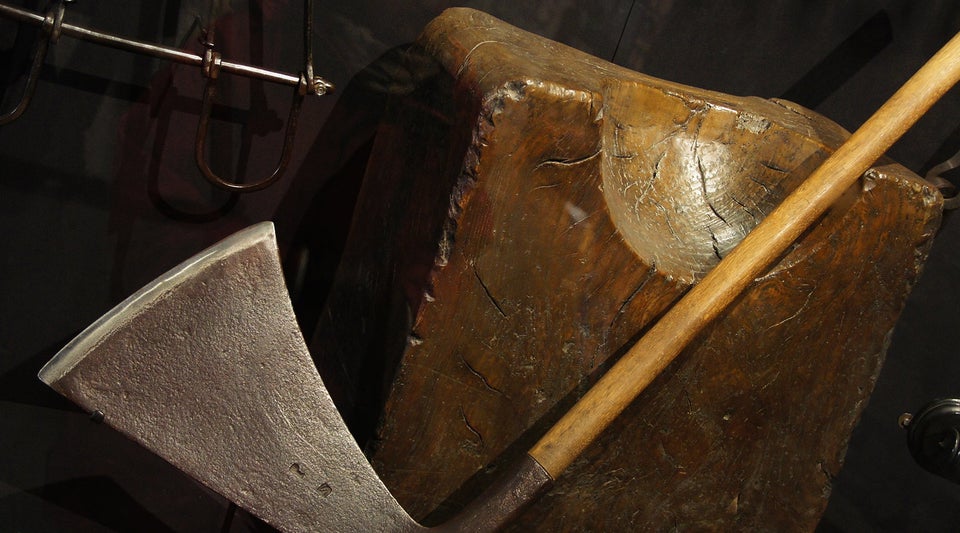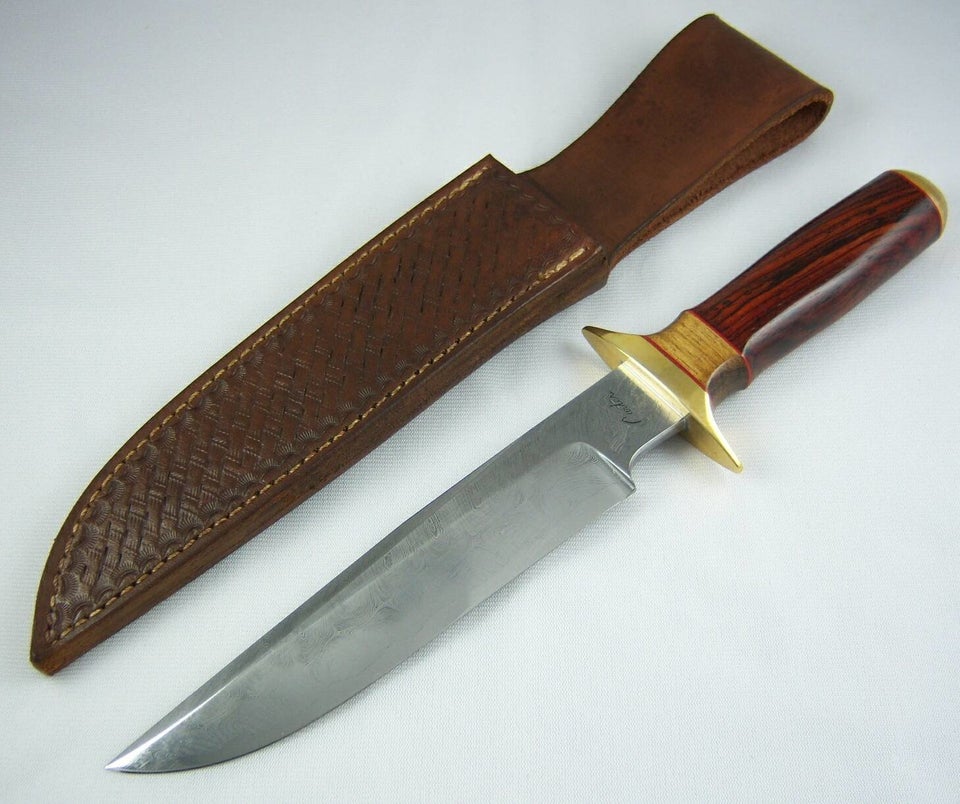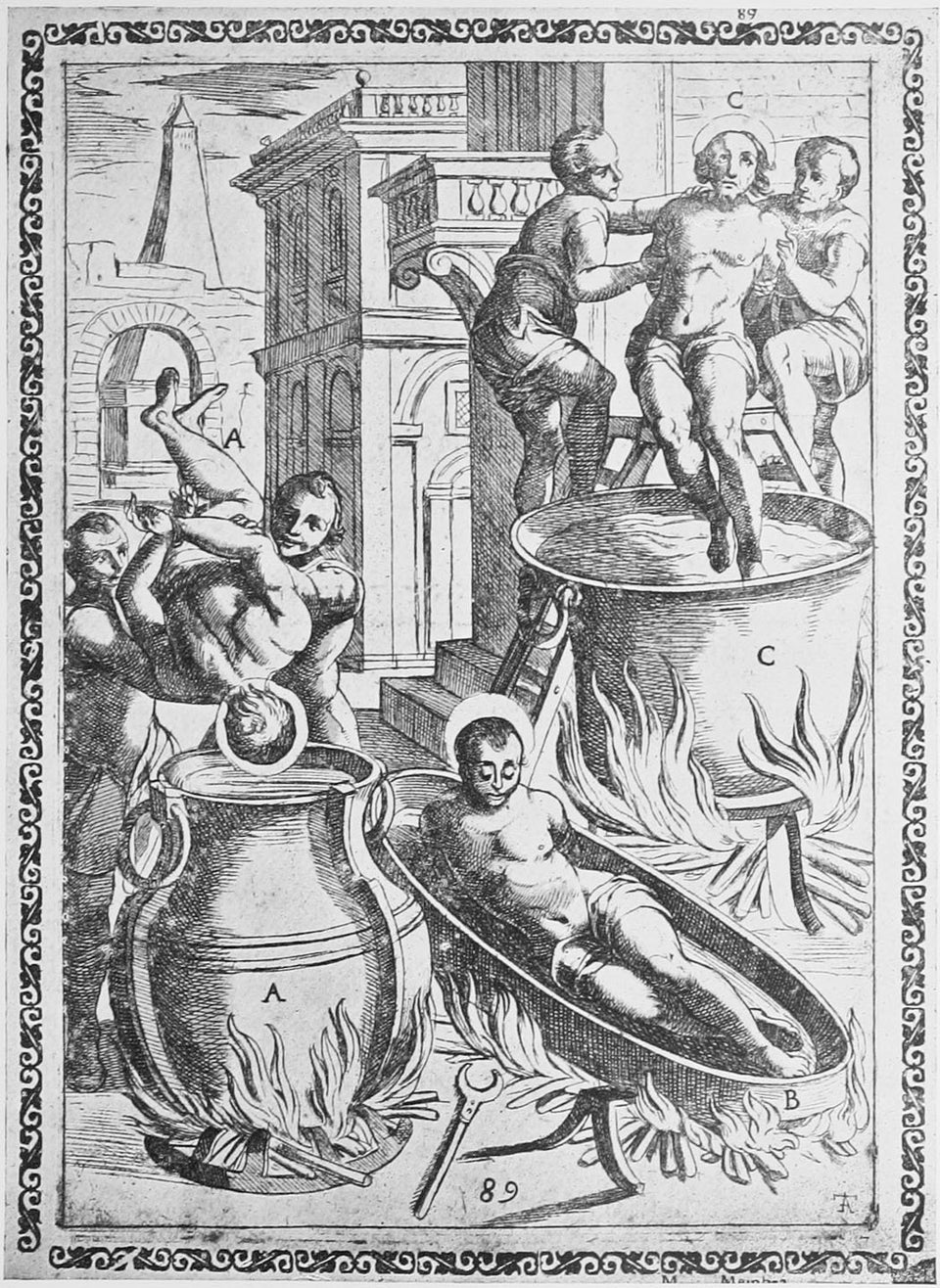A recent pair of botched executions has renewed the debate over lethal injection and whether it's actually less inhumane than other methods used to execute condemned prisoners.
In January, when Ohio used a new drug "cocktail" to execute convicted rapist and murderer Dennis McGuire, he reportedly gasped repeatedly and took more than 25 minutes to die. Days earlier, when Oklahoma executed Michael Lee Wilson, the convicted killer uttered these last words: "I feel my whole body burning."
(See below for a selected history of execution methods.)
Leaving aside the issue of whether the death penalty itself is inhumane, one might think that science could be enlisted to help devise a method of execution that spares the condemned from needless suffering.
Certainly there are historical examples of scientists and physicians offering their execution expertise. In the late 19th Century, researchers in the U.S. developed the electric chair as a more humane alternative to public hangings. Despite their efforts, executions using the chair often proved to be quite grotesque. As U.S. Supreme Court Justice William Brennan wrote in a dissent to the Supreme Court in the case of Glass v. Louisiana (1985):
The prisoner's eyeballs sometimes pop out and rest on [his] cheeks. The prisoner often defecates, urinates, and vomits blood and drool. The body turns bright red as its temperature rises, and the prisoner's flesh swells and his skin stretches to the point of breaking. Sometimes the prisoner catches on fire ... Witnesses hear a loud and sustained sound like bacon frying, and the sickly sweet smell of burning flesh permeates the chamber.
Roughly a century earlier, French physicians Joseph-Ignace Guillotin and Antoine Lois developed the guillotine to be a painless and efficient execution machine.
In any case, many doctors today are guided by the Hippocratic Oath, which forbids them from willfully inflicting harm on others.
"It is unethical for physicians (the only ones with the requisite knowledge) to participate in the unwilling demise of any human being," Dr. David Lubarsky, an University of Miami anesthesiologist who has conducted research on lethal injection, told The Huffington Post in an email. "We don't kill people who want to live. We don't help others kill people who want to live... Once you cross the line as an agent/enabler of the state to cause the death of someone not seeking to die, you are no longer a healer."
When lethal injection got its start in 1977, the medical community certainly kept its distance.
As Deborah Denno, a Fordham University law professor who has testified in many lethal injection cases, said of the invention of the three-drug protocol typically used in lethal injection, "There was no medical testing of the drug combination. There was no science. I think it was the pretense of science and a medical veneer. It was basically concocted in an afternoon."
Now, in some states, critical drug shortages have forced corrections departments to find new untested drug alternatives.
"It’s not like you have a scientific expert sitting there and saying ‘these are the drugs you should use and in this amount.’" Denno said. "To the contrary I think one of the reasons we see these constant problems and this jump from drug to drug is these people, either they’re getting no advice whatsoever or the advice they’re getting is very bad and it’s all under the table."
Even if science could aid in the development of a more humane killing method, Denno said, those with the appropriate expertise are unlikely to get involved.
"In light of a long-standing history from the late 1800s up to the present time, I would be extraordinarily surprised if the scientific community ever got involved in this issue."
Keep reading for a look at methods of execution in use at various times.
Lethal Injection
AP
Until 2010, most states used a three-drug combination: an anesthetic (pentobarbital or sodium thiopental), a paralytic agent (pancuronium bromide) to paralyze the muscle system, and a drug to stop the heart (potassium chloride). Recently, European pharmaceutical companies have refused to sell drugs to the U.S. for use in lethal injections, requiring states to find new, untested alternatives.
Gas Chamber
AP
Gas chambers, like this one pictured at the former Missouri State Penitentiary in Jefferson City, Mo., were first used in the U.S. in 1924. In the procedure, an inmate is sealed inside an airtight chamber which is then filled with toxic hydrogen cyanide gas. Oxygen starvation ultimately leads to death, but the inmate does not immediately lose consciousness.
Electric Chair
AP
The first electric chair was used in 1890. Electrodes attached to an inmate's body deliver a current of electricity. Sometimes more than one jolt is required.
Hanging
AP
Hanging was used as the primary method of execution in the U.S. until the electric chair's invention in 1890. Death is typically caused by dislocation of the vertebrae or asphyxiation, but in cases when the rope is too long, the inmate can sometimes be decapitated. If too short, the
inmate can take up to 45 minutes to die.
Firing Squad
AP
This Old West-style execution method dates back to the invention of firearms. In a typical scenario in the U.S., the inmate is strapped to a chair. Five anonymous marksmen stand 20 feet away, aim rifles at the convict's heart, and shoot. One rifle is loaded with blanks.
Beheading
Wikimedia Commons
Guillotine
Kauko via Wikimedia Commons
Hanging, Drawing and Quartering
Wikimedia Commons
A punishment for men convicted of high treason,
"hanging, drawing and quartering" was used in England between the 13th and 19th centuries. Men were dragged behind a horse, then hanged, disemboweled, beheaded, and chopped or torn into four pieces.
Slow Slicing
Carter Cutlery/Wikimedia Commons
Also called
"death by a thousand cuts," this execution method was used in China from roughly A.D. 900 until it was banned in 1905. The slicing took place for up to three days. It was used as punishment for treason and killing one's parents.
Boiling Alive
Wikimedia Commons
Death by boiling goes back to the first century A.D., and was legal in the 16th century in England as punishment for treason. This method of execution involved placing the person into a large cauldron containing a boiling liquid such as oil or water.
Crucifixion
Wikimedia Commons
Crucifixion goes back to around the 6th century B.C.used today in Sudan. For this method of execution, a person is tied or nailed to a cross and left to hang. Death is slow and painful, ranging from hours to days.
Burning Alive
Pat Canova via Getty Images
Records show societies
burning criminals alive as far back as the 18 century B.C. under Hammurabi's Code of Laws in Babylonia. It has been used as punishment for sexual deviancy, witchcraft, treason and heresy.
Live Burial
Antoine Wiertz/Wikimedia Commons
Execution by burial goes back to 260 B.C. in ancient China, when 400,000 were reportedly buried alive by the Qin dynasty. Depending on the size of the coffin (assuming there is one), it can take anywhere from 10 minutes to several hours for a
person to run out of oxygen.
Crushing By Elephant
Wikimedia Commons
Flaying
Michelangelo/Wikimedia Commons
Impalement
Wikimedia Commons
Support HuffPost
Our 2024 Coverage Needs You
Your Loyalty Means The World To Us
At HuffPost, we believe that everyone needs high-quality journalism, but we understand that not everyone can afford to pay for expensive news subscriptions. That is why we are committed to providing deeply reported, carefully fact-checked news that is freely accessible to everyone.
Whether you come to HuffPost for updates on the 2024 presidential race, hard-hitting investigations into critical issues facing our country today, or trending stories that make you laugh, we appreciate you. The truth is, news costs money to produce, and we are proud that we have never put our stories behind an expensive paywall.
Would you join us to help keep our stories free for all? Your contribution of as little as $2 will go a long way.
Can't afford to donate? Support HuffPost by creating a free account and log in while you read.
As Americans head to the polls in 2024, the very future of our country is at stake. At HuffPost, we believe that a free press is critical to creating well-informed voters. That's why our journalism is free for everyone, even though other newsrooms retreat behind expensive paywalls.
Our journalists will continue to cover the twists and turns during this historic presidential election. With your help, we'll bring you hard-hitting investigations, well-researched analysis and timely takes you can't find elsewhere. Reporting in this current political climate is a responsibility we do not take lightly, and we thank you for your support.
Contribute as little as $2 to keep our news free for all.
Can't afford to donate? Support HuffPost by creating a free account and log in while you read.
Dear HuffPost Reader
Thank you for your past contribution to HuffPost. We are sincerely grateful for readers like you who help us ensure that we can keep our journalism free for everyone.
The stakes are high this year, and our 2024 coverage could use continued support. Would you consider becoming a regular HuffPost contributor?
Dear HuffPost Reader
Thank you for your past contribution to HuffPost. We are sincerely grateful for readers like you who help us ensure that we can keep our journalism free for everyone.
The stakes are high this year, and our 2024 coverage could use continued support. If circumstances have changed since you last contributed, we hope you’ll consider contributing to HuffPost once more.
Already contributed? Log in to hide these messages.

